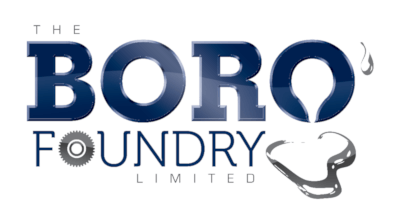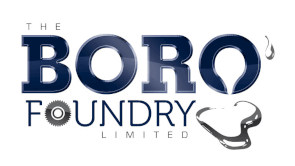Abrasion-Resistant White Irons: Ni-Hard, Unalloyed and High Chromium Grades to BS 4844:1986
Boro Foundry supplies abrasion-resistant castings in a range of white iron grades, including Ni-Hard and high-chromium alloys, manufactured to BS 4844:1986. These materials are engineered for exceptional wear resistance in demanding service environments such as mining, quarrying, and material handling. Our foundry produces components up to 1.7 tonnes, with tight control over chemical composition and carbide structure. Whether you require the toughness of Ni-Hard or the enhanced corrosion resistance of high-chromium iron, we deliver castings to meet your exact performance criteria.
Chemical Composition Limits for Abrasion-Resistant White Irons
The table below outlines the specified chemical composition ranges for abrasion-resistant white irons, including Ni-Hard and High Chromium Grades, as defined in BS 4844:1986. These compositions are carefully balanced to promote carbide formation, enhance wear resistance, and control solidification behaviour across different casting types and section sizes.
| Grade | Standard | Equivalents (Standard / Grade) | C % | Si % | Mn % | Ni % | Cr % | Mo % | Cu % | P % |
|---|---|---|---|---|---|---|---|---|---|---|
| Unalloyed White Iron | ||||||||||
| 1A | BS 4844:1986 |
| 2.4 – 3.4 | 0.5 – 1.5 | 0.2 – 0.8 | - | 2.0 max | - | - | 0.15 |
| 1B | BS 4844:1986 |
| 2.4 – 3.4 | 0.5 – 1.5 | 0.2 – 0.8 | - | 2.0 max | - | - | 0.5 |
| 1C | BS 4844:1986 |
| 2.4 – 3.4 | 0.5 – 1.5 | 0.2 – 0.8 | - | 2.0 max | - | - | 0.15 |
| Ni-Hard | ||||||||||
| 2A | BS 4844:1986 |
| 2.7 – 3.2 | 0.3 – 0.8 | 0.2 – 0.8 | 3.0 – 5.5 | 1.5 – 3.5 | 0.5 max | - | 0.15 |
| 2B | BS 4844:1986 |
| 3.2 – 3.6 | 0.3 – 0.8 | 0.2 – 0.8 | 3.0 – 5.5 | 1.5 – 3.5 | 0.5 max | - | 0.15 |
| 2C | BS 4844:1986 |
| 2.4 – 2.8 | 1.5 – 2.2 | 0.2 – 0.8 | 4.0 – 6.0 | 8.0 – 10.0 | 0.5 max | - | 0.15 |
| 2D | BS 4844:1986 |
| 2.8 – 3.2 | 1.5 – 2.2 | 0.2 – 0.8 | 4.0 – 6.0 | 8.0 – 10.0 | 0.5 max | - | 0.15 |
| 2E | BS 4844:1986 |
| 3.2 – 3.6 | 1.5 – 2.2 | 0.2 – 0.8 | 4.0 – 6.0 | 8.0 – 10.0 | 0.5 max | - | 0.15 |
| High-Chromium White Iron | ||||||||||
| 3A | BS 4844:1986 |
| 1.8 – 3.0 | 1.0 max | 0.5 – 1.5 | 2.0 max | 14 – 17 | 2.5 max | 2 | 0.1 |
| 3B | BS 4844:1986 |
| 3.0 – 3.6 | 1.0 max | 0.5 – 1.5 | 2.0 max | 14 – 17 | 3.0 max | 2 | 0.1 |
| 3C | BS 4844:1986 |
| 1.8 – 3.0 | 1.0 max | 0.5 to 1.5 | 2.0 max | 17 – 22 | 3.0 max | 2 | 0.1 |
| 3D | BS 4844:1986 |
| 2.0 – 2.8 | 1.0 max | 0.5 – 1.5 | 2.0 max | 22 – 28 | 1.5 max | 2 | 0.1 |
| 3E | BS 4844:1986 |
| 2.8 – 3.5 | 1.0 max | 0.5 – 1.5 | 2.0 max | 22 – 28 | 1.5 max | 2 | 0.1 |
| 3F | BS 4844:1986 |
| 2.0 – 2.7 | 1.0 max | 0.5 – 1.5 | 2.0 max | 11 – 13 | 2.5 max | 2 | 0.1 |
| 3G | BS 4844:1986 |
| 2.7 – 3.4 | 1.0 max | 0.5 – 1.5 | 2.0 max | 11 – 13 | 3.0 max | 2 | 0.1 |
Brinell Hardness Specifications for Abrasion-Resistant White Irons
Minimum Brinell hardness values are provided for each grade to indicate expected wear resistance in service. For Ni-Hard and Unalloyed White Irons, hardness requirements vary by casting section thickness due to cooling rate effects. High Chromium Grades, by contrast, maintain a consistent minimum hardness across all section sizes.
| Grade | Standard | Equivalents (Standard / Grade) | HB Min (Section – Up to 50mm) | HB Min (Section – Over 50mm) | HB Min (Section – Up to 125mm) | HB Min (Section – Over 125mm) | HB Min |
|---|---|---|---|---|---|---|---|
| Unalloyed White Iron | |||||||
| 1A | BS 4844:1986 |
| 400 | 350 | - | - | - |
| 1B | BS 4844:1986 |
| 400 | 350 | - | - | - |
| 1C | BS 4844:1986 |
| 250 | 200 | - | - | - |
| Ni-Hard | |||||||
| 2A | BS 4844:1986 |
| - | - | 500 | 450 | - |
| 2B | BS 4844:1986 |
| - | - | 550 | 500 | - |
| 2C | BS 4844:1986 |
| - | - | 500 | 450 | - |
| 2D | BS 4844:1986 |
| - | - | 550 | 500 | - |
| 2E | BS 4844:1986 |
| - | - | 600 | 550 | - |
| High-Chromium White Iron | |||||||
| 3A | BS 4844:1986 |
| - | - | - | - | 600 |
| 3B | BS 4844:1986 |
| - | - | - | - | 650 |
| 3C | BS 4844:1986 |
| - | - | - | - | 600 |
| 3D | BS 4844:1986 |
| - | - | - | - | 600 |
| 3E | BS 4844:1986 |
| - | - | - | - | 600 |
| 3F | BS 4844:1986 |
| - | - | - | - | 600 |
| 3G | BS 4844:1986 |
| - | - | - | - | 650 |
FREQUENTLY ASKED QUESTIONS
What white iron grades do you supply?
We offer a selection of abrasion-resistant white irons, including Unalloyed White Iron, Ni-Hard grades, and High Chromium White Irons, in accordance with BS 4844:1986. These cover a range of compositions suited to high-wear industrial environments.
Are your Ni-Hard castings made to recognised standards?
Yes. Our Ni-Hard and white iron grades conform to the chemical composition limits defined in BS 4844:1986, with each casting validated for metallurgical integrity and performance.
What is the maximum casting weight you can produce in white iron?
We can produce white iron castings, including Ni-Hard, up to 2 tonnes. Final capacity depends on the grade, design complexity, and section thickness.
Can you advise on the right white iron grade for my application?
Absolutely. We’ll help you select the most appropriate material based on your abrasion, corrosion, and impact requirements — whether that’s a basic unalloyed grade or a high-alloy chromium iron.
How do you control quality in your Ni-Hard and white iron castings?
We maintain strict control over alloy composition, cooling rates, and carbide formation. Castings undergo testing to verify conformance with specified grades and ensure consistent wear performance in service.

